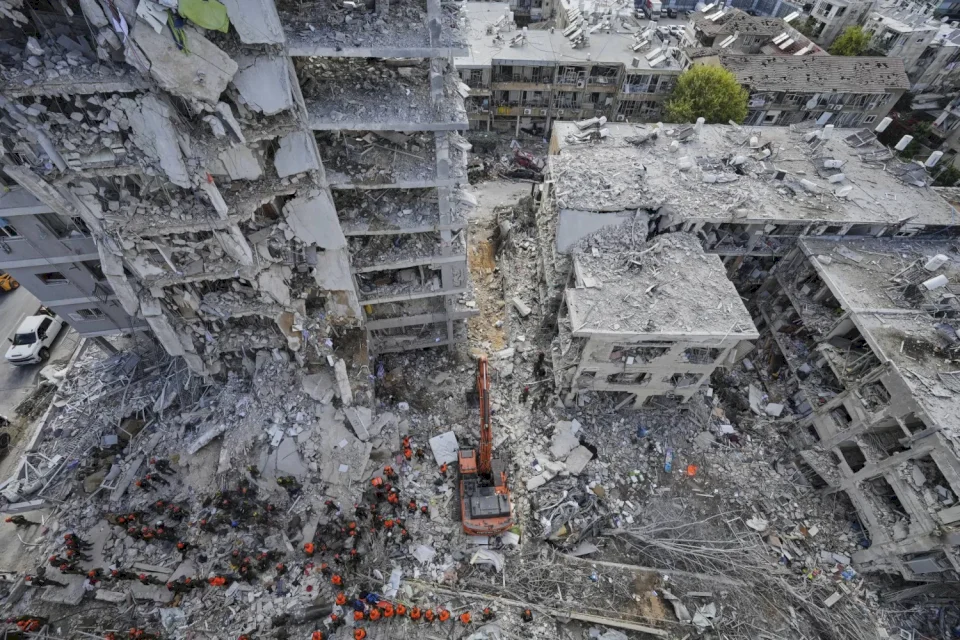
Report: Iran Directly Struck 5 Israeli Military Bases During the 12-Day War
Sada News - It appears that Iranian missiles directly hit 5 Israeli military facilities during the recent 12-day conflict, according to radar data reviewed by the "Telegraph" newspaper.
The Israeli authorities did not announce these strikes, and they cannot be reported from within the country due to strict military censorship laws.
These strikes will complicate the verbal battle between the adversaries, as each side seeks to claim absolute victory.
Academics from Oregon State University in the United States, specializing in the use of satellite radar data to reveal bomb damage in war zones, shared this new data with the "Telegraph".
Reports indicate that 5 previously unreported military installations were struck by 6 Iranian missiles in northern, southern, and central Israel, including a major airbase, an intelligence-gathering center, and a logistical base.
When the "Telegraph" contacted the Israeli army yesterday (Friday), they stated that they would not comment on missile interception rates or damage to their bases.
An army spokesperson said: "What we can say is that all units involved maintained operational continuity throughout the operation."
These strikes on military facilities add to 36 other strikes known to have breached Israeli air defense systems, causing significant damage to residential and industrial infrastructure.
Despite the extensive damage to residential properties nationwide, only 28 Israelis were killed, which is evidence of the country's advanced alert system, disciplined use of shelters, and safe rooms by the population.
An analysis conducted by the "Telegraph" indicates that while the vast majority of Iranian missiles were intercepted, the percentage of missiles that successfully penetrated the borders steadily increased during the first 8 days of the 12-day war.
Experts clarified that the reasons for this are unclear, but may include rationing of a limited stock of intercepting missiles on the Israeli side, improved firing methods, and the possibility of Iran using more sophisticated missiles.
Although the "Iron Dome" is the most famous of Israel's air defense systems, it is actually designed to protect against short-range projectiles such as mortars, and is only one part of the "multi-layered" air defense system employed by the country.
In the middle layer, the "David's Sling" air defense system stands, optimized to intercept drones and missiles with a range of up to 300 kilometers. At the top, there is the "Arrow" system, which engages long-range ballistic missiles before they re-enter the atmosphere.
In Israel, a small nation with a population of no more than 9.7 million people, breaching the country's famous missile defense systems came as a shock, forcing authorities to issue warnings that they are "not foolproof".
Doubts increased within the country regarding targeting military objectives.
Raviv Drucker, a reporter for "Channel 13" and one of the country's most prominent journalists, stated last week: "Many of the Iranian missile strikes occurred at Israeli military bases in strategic locations that we are still not reporting on to this day... This has created a situation where people are unaware of the precision of the Iranians and the extent of the destruction they have caused in several places."
In turn, Corey Shearer, a researcher at Oregon State University, reported that his unit is working on a more comprehensive assessment of missile damage in both Israel and Iran, with results to be published in about two weeks.
He added that the radar system data they used to assess the damage measured changes in the built environment to detect explosions, and the absolute confirmation of strikes requires either field reports from the relevant military sites or satellite images.
Data analysis, conducted by the "Telegraph", shows that the performance of the joint U.S.-Israeli defense systems was generally good, but they allowed approximately 16 percent of missiles to get through by the seventh day of the war.
This generally aligns with a previous estimate from the Israeli army, which set the success rate at "87 percent".

Second in Less Than a Week.. Martyrdom of a Prisoner from Bethlehem in Occupation Prisons

Occupation forces arrest 25 citizens from Hebron and Halhul (Video)

Continuous Violations of the Ceasefire in Different Areas of the Gaza Strip

Assassination of an Internal Security Officer in Gaza and Arrest of a Suspect

Settlers Burn a 'Caravan' and a Bulldozer and Spray Racist Slogans in Kafr Malik (Photos)

Hamas Confirms Rejection of Guardianship over Gaza and Warns Against Plans to Restructure...

Israel Freezes Strike in Southern Lebanon and Explains the Reasons

